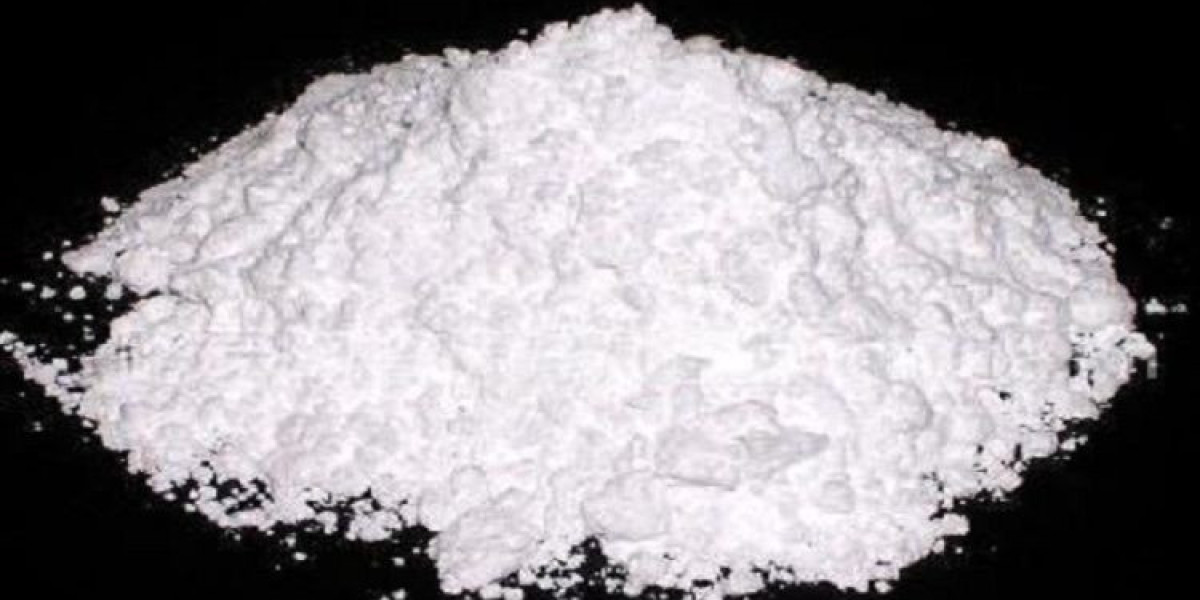The global aluminium fluoride market size is expected to grow at a CAGR of 4% in the forecast period of 2024-2032, driven by its crucial role in the aluminium industry. This blog post dives deep into the various applications of aluminium fluoride, exploring how this seemingly simple compound acts as a lynchpin in the production of the versatile metal we use every day.
I. Introduction
A. Definition of Aluminium Fluoride
Aluminium fluoride (AlF₃) is an inorganic compound, appearing as a white or colorless, crystalline powder. It's odorless and plays a vital role in various industrial processes, particularly in the aluminium industry.
B. Brief Overview of the Aluminium Industry
Aluminium is the second most used metal globally, after iron. It's lightweight, strong, and conducts electricity well, making it a valuable material for construction, transportation, packaging, and countless other applications. However, extracting pure aluminium from its natural ore, bauxite, is an energy-intensive process. This is where aluminium fluoride comes in.
C. Purpose of the Blog Post
This blog post aims to explore the various applications of aluminium fluoride in aluminium production. We'll delve into the aluminium smelting process, the production of aluminium metal and alloys, and the role aluminium fluoride plays in protecting electrolysis cells and acting as a catalyst.
II. Aluminium Smelting Process
Aluminium smelting is the process of extracting aluminium metal from bauxite ore. Here's how aluminium fluoride contributes to this critical stage:
A. Role of Aluminium Fluoride in Smelting
Bauxite ore contains aluminium oxide (Al₂O₃), but it's highly resistant to melting at high temperatures. Here's where aluminium fluoride enters the picture. When mixed with aluminium oxide, it lowers the melting point of the mixture, significantly reducing the energy required for the smelting process. Aluminium fluoride acts as a flux, promoting the formation of a molten liquid that separates the aluminium from impurities.
B. Benefits of Aluminium Fluoride as a Flux
- Reduced Energy Consumption: Lowering the melting point of the aluminium oxide mixture translates to significant energy savings in smelting operations. This not only reduces production costs but also contributes to a more sustainable aluminium industry.
- Improved Efficiency: By facilitating a smoother smelting process, aluminium fluoride helps to streamline aluminium production and increase overall efficiency.
C. Importance for Efficiency Improvement
The energy intensity of the aluminium smelting process has been a major concern. Aluminium fluoride's role in lowering the melting point and enhancing efficiency makes it a crucial contributor to a more sustainable aluminium production chain.
III. Aluminium Production
Once the molten aluminium is separated from impurities during smelting, it's further processed to create pure aluminium metal. Let's see how aluminium fluoride plays a part:
A. Using Aluminium Fluoride in Production
Even after smelting, the molten aluminium may still contain some impurities. Here, aluminium fluoride is used again, this time in a process called electrolytic refining. In this process, the molten aluminium is passed through an electrolytic cell where aluminium fluoride acts as a bath electrolyte. This bath helps to separate the remaining impurities from the pure aluminium metal.
B. Benefits of Aluminium Fluoride in Production
- Enhanced Purity: By facilitating the removal of impurities during electrolytic refining, aluminium fluoride helps to produce high-purity aluminium metal.
- Improved Product Quality: High-purity aluminium is essential for various applications, and aluminium fluoride's role in achieving this purity is critical.
C. Specific Processes
Electrolytic refining is the primary application of aluminium fluoride in aluminium metal production. This process allows for the creation of high-grade aluminium used in various sectors like aerospace, automotive, and electrical applications.
IV. Aluminium Alloy Production
Aluminium alloys are created by combining aluminium with other elements to achieve specific properties like increased strength, corrosion resistance, or better workability. Here's where aluminium fluoride plays its part:
A. Role in Alloy Production
During the production of some aluminium alloys, aluminium fluoride is used as a fluxing agent. Similar to its role in smelting, it helps to lower the melting point of the mixture, allowing for a more efficient alloying process.
B. Benefits of Aluminium Fluoride in Alloy Production
- Efficient Alloying: Lowering the melting point of the alloying mixture facilitates a smoother and more efficient process, leading to higher production yields.
- Improved Alloy Properties: Certain aluminium fluoride compounds can even contribute to specific properties of the final alloy.
C. Examples of Enhanced Alloys
Aluminium alloys like AA2024 (used in aircraft) and AA6061 (used in building and construction) often utilize aluminium fluoride during their production process.
V. Electrolysis Cell Linings
The electrolytic cells used in aluminium production are lined with a special material called a cryolite bath. This bath plays a crucial role in the electrolytic refining process:
A. Using Aluminium Fluoride in Cell Linings
Cryolite (Na₃AlF₆) is a naturally occurring mineral, but its availability is limited. To supplement and enhance the properties of cryolite, aluminium fluoride (AlF₃) is often added to the cell lining. This creates a molten salt bath with a lower melting point than pure cryolite, improving the efficiency of the electrolysis process.
B. Benefits of Aluminium Fluoride for Cell Linings
- Enhanced Efficiency: The lower melting point of the aluminium fluoride-cryolite mixture allows for smoother operation of the electrolysis cell, leading to increased efficiency.
- Extended Cell Life: Aluminium fluoride helps to protect the cell lining from degradation during the high-temperature electrolysis process, extending the lifespan of the cell and reducing maintenance costs.
C. Importance for Extending Cell Life
Electrolysis cells are expensive to replace. By extending the lifespan of these cells, aluminium fluoride contributes to significant cost savings in aluminium production. Additionally, it minimizes downtime associated with cell replacement, keeping production lines running smoothly.








